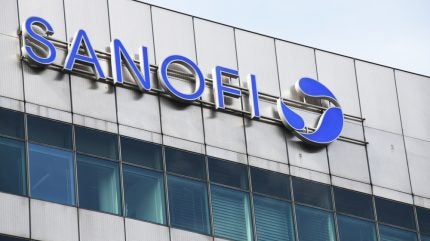
Sanofi rode the growing sales wave for blockbuster immunology drug Dupixent (dupilumab) in Q2 but reported lower-than-expected profits after outlaying money to develop new treatments.
Dupixent generated sales of €3.8bn ($4.35bn) for the company in the quarter, growing 21.1% over the same period in 2024.

Discover B2B Marketing That Performs
Combine business intelligence and editorial excellence to reach engaged professionals across 36 leading media platforms.
Sanofi expanded the sales reach of the drug with approvals in the lucrative chronic obstructive pulmonary disease (COPD) market. Dupixent’s success pushed Sanofi’s total net sales to €9.9bn, up 10% at constant exchange rate (CER).
The French drugmaker said it expects annual sales growth in the high single-digits at constant currency rates, compared to a previous forecast of mid- to high-single-digit growth. In a conference call on 31 July, chief financial officer François-Xavier Roger said that whilst tariffs were not modelled into the guidance, little impact is expected on financials in 2025.
Sanofi CEO Paul Hudson said: “Eight years after market introduction, Dupixent grew by more than 20%, supported by the COPD launch. Based on strong sales performance in H1, we are refining our 2025 sales guidance to the upper end of our previous range. At the same time, we confirm our guidance of a strong business EPS rebound, which now includes all expenses from newly acquired businesses.”
Sanofi confirmed it hopes to complete a €5bn share buyback programme in 2025, adding that around 80% has been repurchased to date. However, despite progressing its ownership control, earnings per share rose 1.9% to €1.59, lower than the €1.65 analysts estimated. Shares in Sanofi fell 1% at market open to €84.70 on the Paris exchange following the Q2 report posting, despite the strong growth for Dupixent.

US Tariffs are shifting - will you react or anticipate?
Don’t let policy changes catch you off guard. Stay proactive with real-time data and expert analysis.
By GlobalDataThe profit miss was primarily due to an increase in research and development (R&D) expenses. Sanofi invested €1.9bn into the department as it seeks new drugs and vaccines to succeed Dupixent, wary of its outlook becoming too reliant on sales for the product. The R&D spending represented a 17.7% jump compared to Q2 last year.
Sanofi also looked beyond in-house development in efforts to bolster its pipeline – the pharma company has had a busy July in the acquisition space. In July, the drugmaker concluded its buyout of Blueprint Medicines for $9.1bn and agreed to acquire vaccine developer Vicebio for an upfront payment of $1.5bn.
In addition, Sanofi bought Dren Bio’s bispecific antibody for $1.9bn in March 2025 and made a push into Alzheimer’s with a $470m deal for Vigil Neuroscience in May.
Despite M&A buzz, Sanofi shares have declined this year in comparison to other big pharma companies. This has been primarily due to vaccine regulation uncertainty in the US.
Alongside the company’s pipeline diversification strategy, Duxipent looks set to supply a healthy financial outlook for Sanofi. Analysis by GlobalData forecasts sales of €23.8bn by 2031. This is based on rising uptake for the drug and further indications it’s set to gain approval in. GlobalData analysts said Dupixent addressed a biologics gap in the COPD market at the time of approval.





